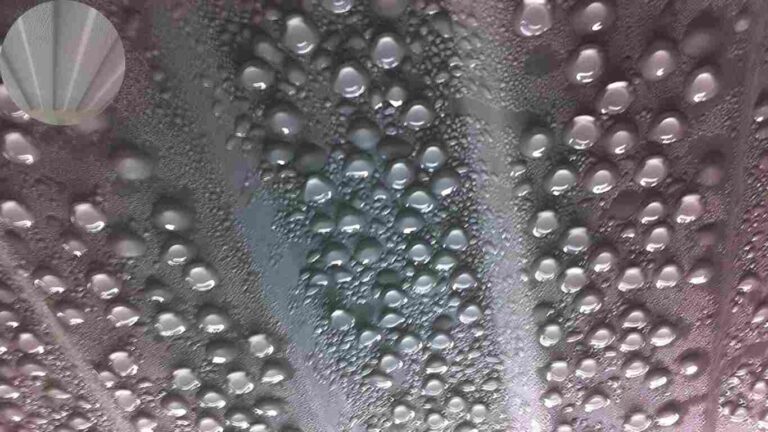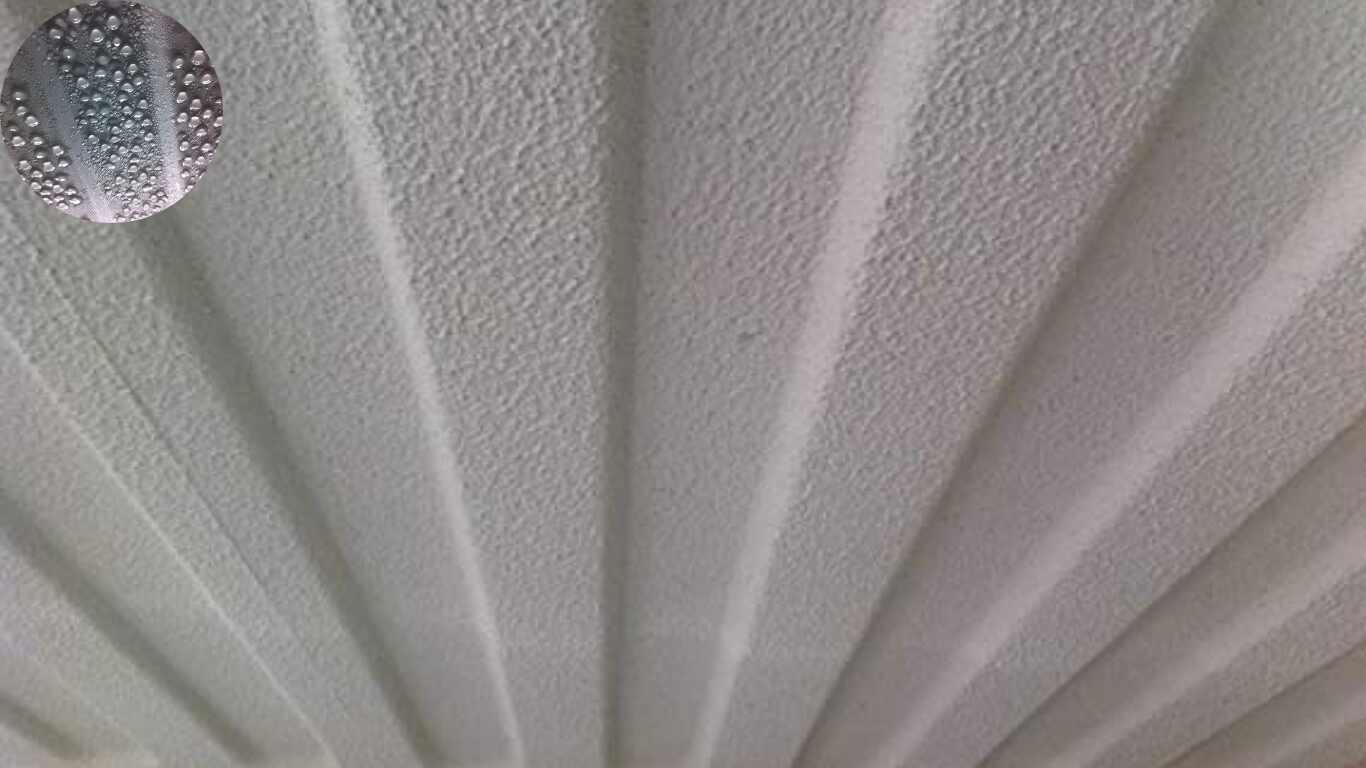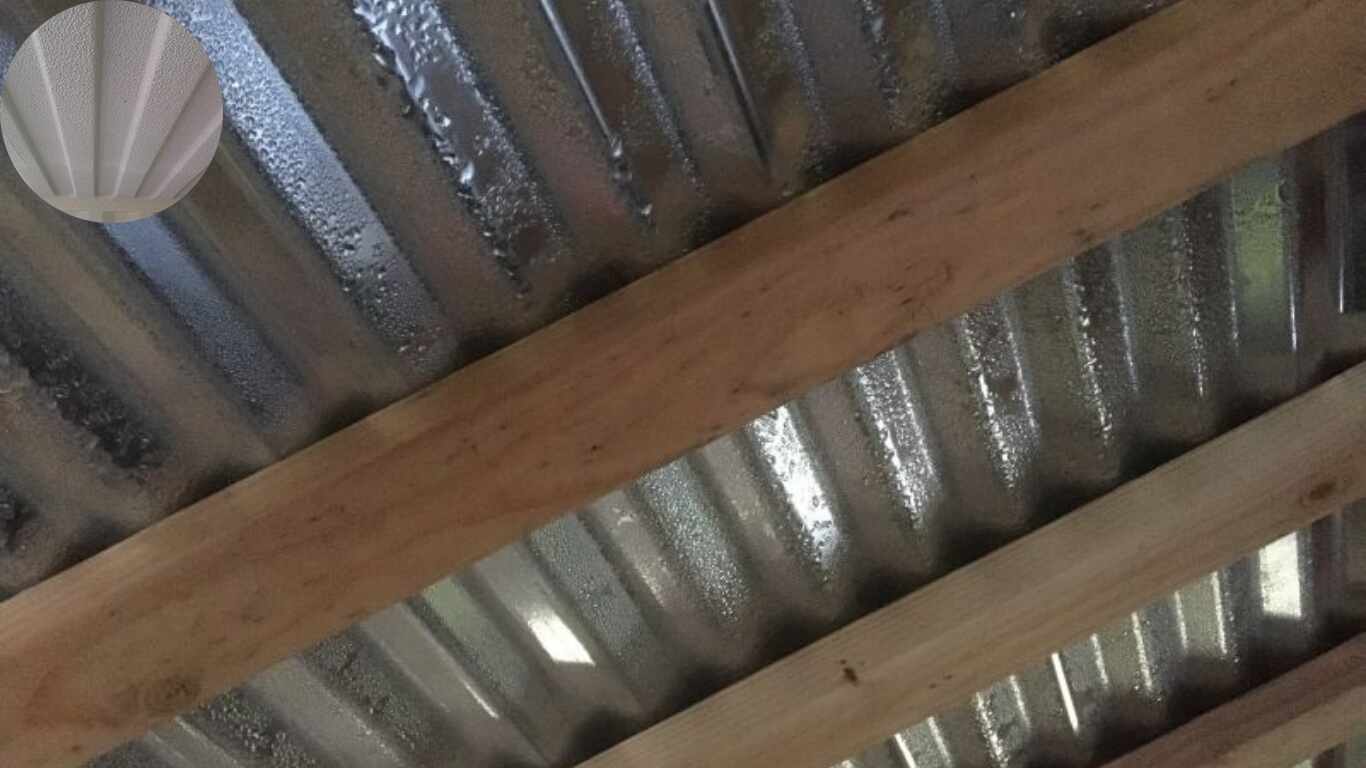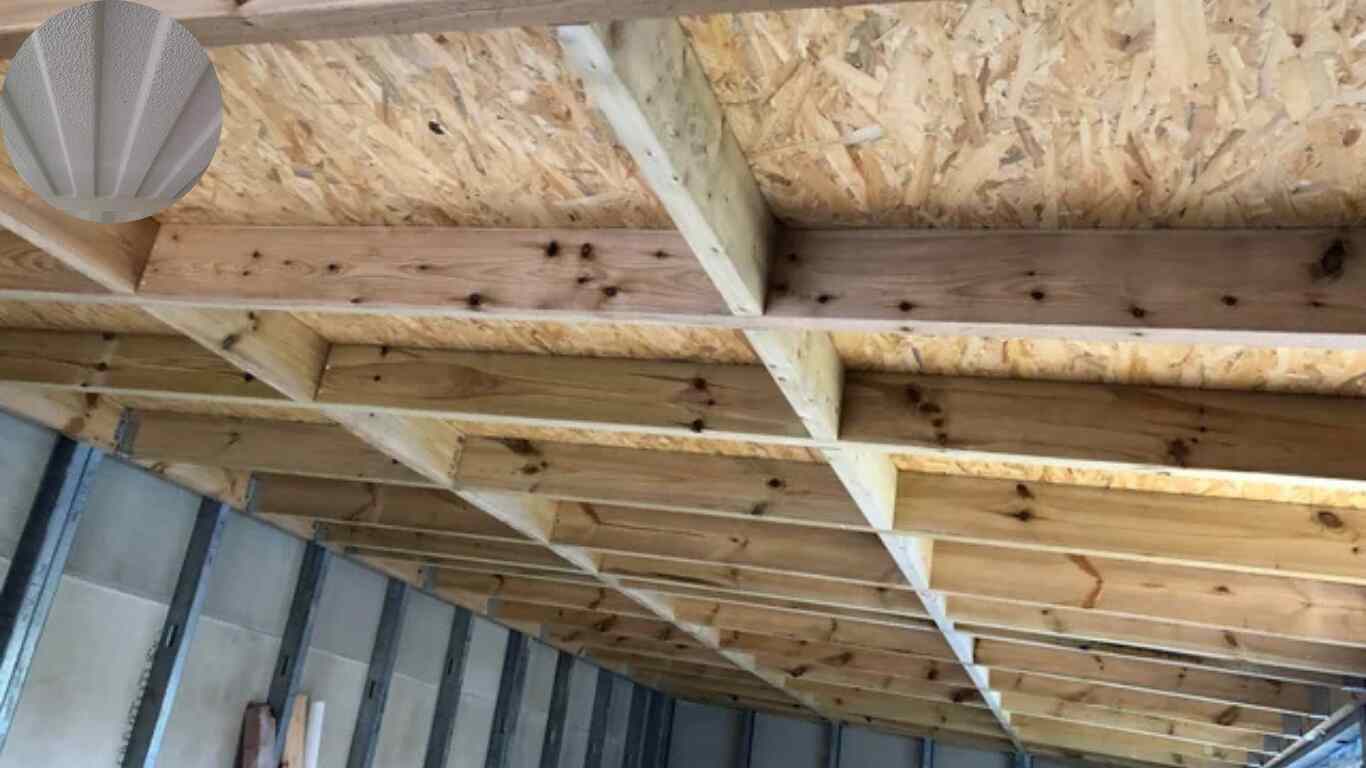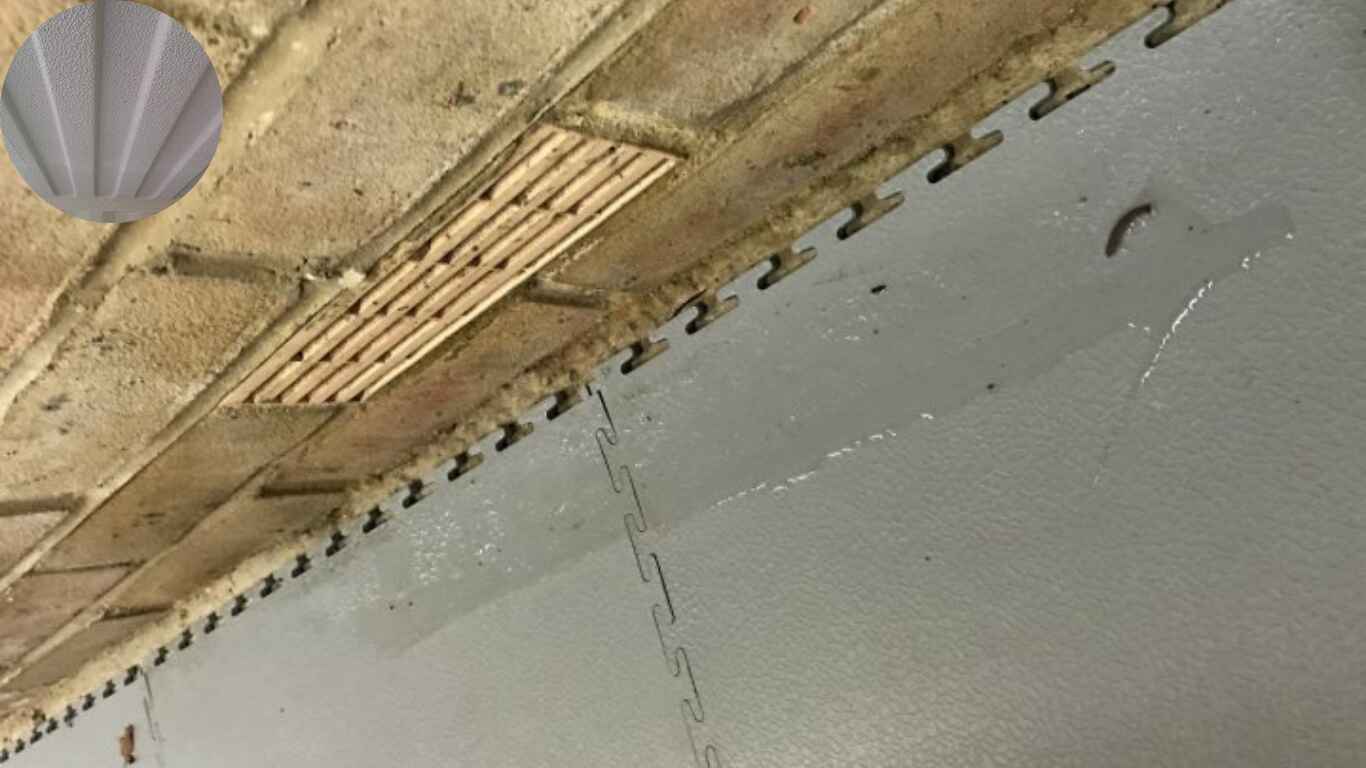Condensation in garage roofs is a common issue, especially in colder months, when the battle between warm and cold air is at its peak. When warm, moist air comes into contact with the cold surfaces of your garage roof, the water vapor in the air cools and liquefies, forming droplets. This process, while natural, can cause significant damage if left unchecked.
Unchecked condensation in your garage can lead to mold growth, wood rot, rust on metal surfaces, and even structural issues. Beyond damage to the structure itself, it can ruin stored items, cause unpleasant odors, and create an unhealthy environment for you and your family.
What Causes Condensation in Your Garage Roof?
Understanding the root causes of condensation is the first step in addressing the problem. Below, we’ll break down the key factors that contribute to this common issue:
Temperature Differences
One of the primary reasons for condensation is the interaction between warm indoor air and cold exterior surfaces. This is particularly common during the winter months when the temperature difference between the inside and outside of your garage is most pronounced.
- How it happens: Warm air holds more moisture than cold air. When this warm air comes into contact with the cold roof surface, it cools rapidly, and the excess moisture condenses into water droplets.
- Seasonal patterns: You’ll often notice this during the colder months, but rapid temperature fluctuations in spring and fall can also trigger condensation.
Poor Ventilation
A lack of proper airflow in your garage can trap moisture-laden air, leading to condensation.
- Signs of poor Ventilation: Look for stagnant air, musty smells, or visible moisture buildup. If your garage feels stuffy, it’s a sign that air isn’t circulating properly.
- Why modern garages are at risk: Newer garages are often designed to be more airtight for energy efficiency. However, without adequate ventilation, moisture problems can inadvertently occur.
Daily Activities That Increase Moisture
Everyday activities in or around your garage can also lead to excessive moisture:
- Hot cars: Parking a hot car in an enclosed garage releases heat and moisture into the air.
- Appliances: Running washers, dryers, or other appliances in the garage without proper Ventilation increases humidity.
- Wet items: Snow-covered tools, rain-soaked clothing, and other wet objects stored in the garage can release moisture as they dry.
Roofing Material Considerations
The type and condition of your roofing material play a significant role in condensation rates:
- Material matters: Metal roofs are notorious for condensation because they cool quickly, making them more prone to moisture buildup.
- Aging roofs: Older roofing materials may develop cracks or other vulnerabilities that exacerbate condensation issues.
Signs of Condensation Problems in Your Garage
Identifying condensation early can save you from costly repairs. Here’s how to recognize the issue before it escalates.
You may also read (paint your metal garage door)
Visual Indicators
- Water droplets: Look for beads of water clinging to the ceiling.
- Streaks and drips: Moisture may streak down walls or drip onto the floor.
- Frost or ice: In colder climates, condensation can freeze on the roof surface, forming frost or ice.
Secondary Damage Signs
If condensation has been an issue for a while, you may notice:
- Mold and mildew: Black or green spots on walls, ceilings, or stored items.
- Wood rot: Structural components like beams or plywood may start to decay.
- Rust: Metal components, including tools and shelving, can corrode.
- Damaged belongings: Cardboard boxes and other stored items may become damp or water-stained.
Using Diagnostic Tools
To confirm condensation problems, consider using:
- Moisture meters: These devices measure air and surface humidity levels.
- Thermographic imaging: Infrared cameras can detect temperature variations that indicate moisture.
- DIY tests: Tape a clear plastic sheet to the roof and check for humidity underneath after 24 hours.
Effective Solutions to Stop Condensation in Your Garage Roof
Now that we’ve covered the causes and signs let’s discuss how to solve the problem. Here are seven practical solutions to prevent and manage condensation.
Improve Ventilation
Proper Ventilation is key to preventing moisture buildup.
- Types of vents: Install ridge vents, soffit vents, or gable vents to promote air circulation.
- Balancing airflow: Ensure there’s an even exchange of indoor and outdoor air.
- DIY vs. professional: While some vents are easy to install, larger systems may require professional assistance.
Install Proper Insulation
Insulation helps regulate temperature and reduce condensation.
- Types: Fiberglass batts, spray foam, and rigid foam boards work well for garage roofs.
- R-value: Choose an insulation material with a high R-value (a measure of thermal resistance).
- Cost-benefit: Though insulation requires an upfront investment, it pays off with reduced condensation and energy savings.
Apply Vapor Barriers
Vapor barriers block moisture from penetrating your roof.
- How they work: These materials, like polyethylene sheets, prevent water vapor from reaching cold surfaces.
- Installation tips: Install the barrier on the warmer side of the garage roof to maximize effectiveness.
Use Anti-Condensation Products
Specialized products can absorb or prevent moisture.
- Anti-condensation paints: These coatings reduce moisture buildup on metal roofs.
- Application: Apply evenly with a brush or roller for the best results.
Control Garage Temperature
Temperature regulation is essential for reducing condensation.
- Heating options: Use electric heaters or infrared panels instead of propane heaters, which release moisture.
- Dehumidifiers: Place a dehumidifier in the garage to control humidity levels.
Upgrade Garage Door and Weatherstripping
Sealing gaps and cracks prevent moisture-laden air from entering.
- Weatherstripping: Install high-quality materials to seal doors and windows.
- Thermal technology: Consider upgrading garage doors with thermal breaks for better insulation.
Address Drainage Issues
Improper drainage can exacerbate moisture problems.
- Gutters and downspouts: Ensure they’re clean and direct water away from the garage.
- Grading: The ground around your garage should slope away to prevent water pooling.
Preventative Maintenance Schedule
Regular maintenance is essential to keeping your garage condensation-free.
Seasonal Checks
- Spring: Clean gutters and inspect for leaks.
- Summer: Test ventilation systems.
- Fall: Check insulation and weatherstripping.
- Winter: Monitor for frost or ice formation.
Monthly Tasks
- Conduct quick inspections for moisture or damage.
- Clean and maintain dehumidifiers and heaters.
- Keep an eye out for early signs of condensation.
When to Call Professionals
If DIY methods don’t work, it’s time to call in specialists. Roofing contractors, insulation experts, or HVAC technicians can help address stubborn issues.
Case Study: Successful Garage Condensation Solutions
A homeowner in a cold climate noticed severe condensation in their metal-roof garage. They installed ridge vents, spray foam insulation, and an anti-condensation coating. Within weeks, the condensation disappeared, and their garage remained dry even during winter. This highlights how a multi-faceted approach often yields the best results.
You may also read (garage door costs for your home)

